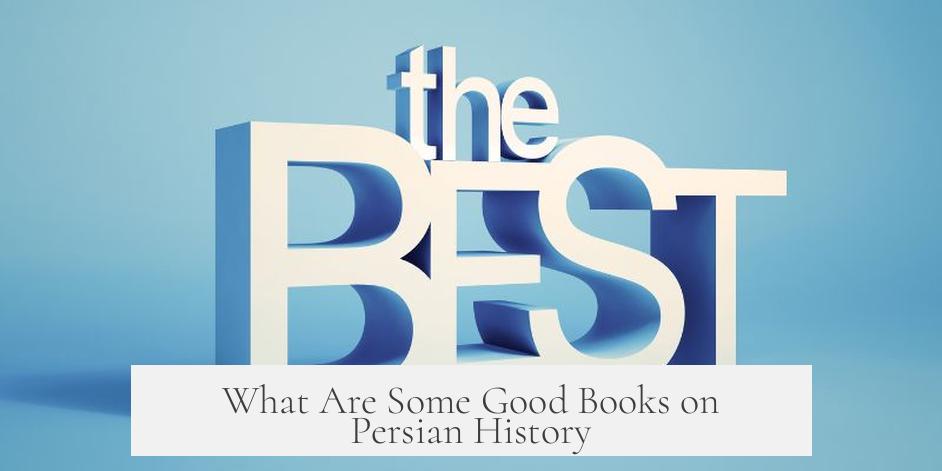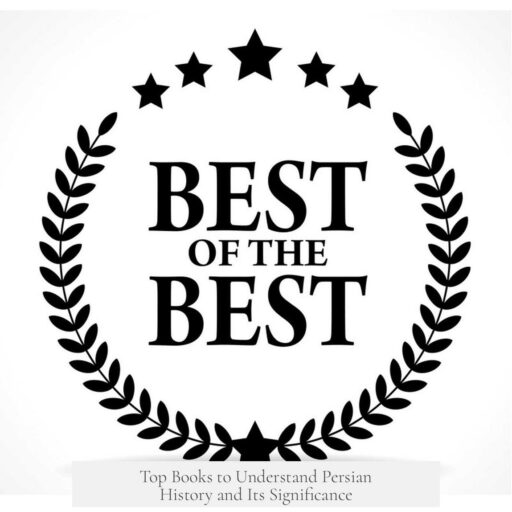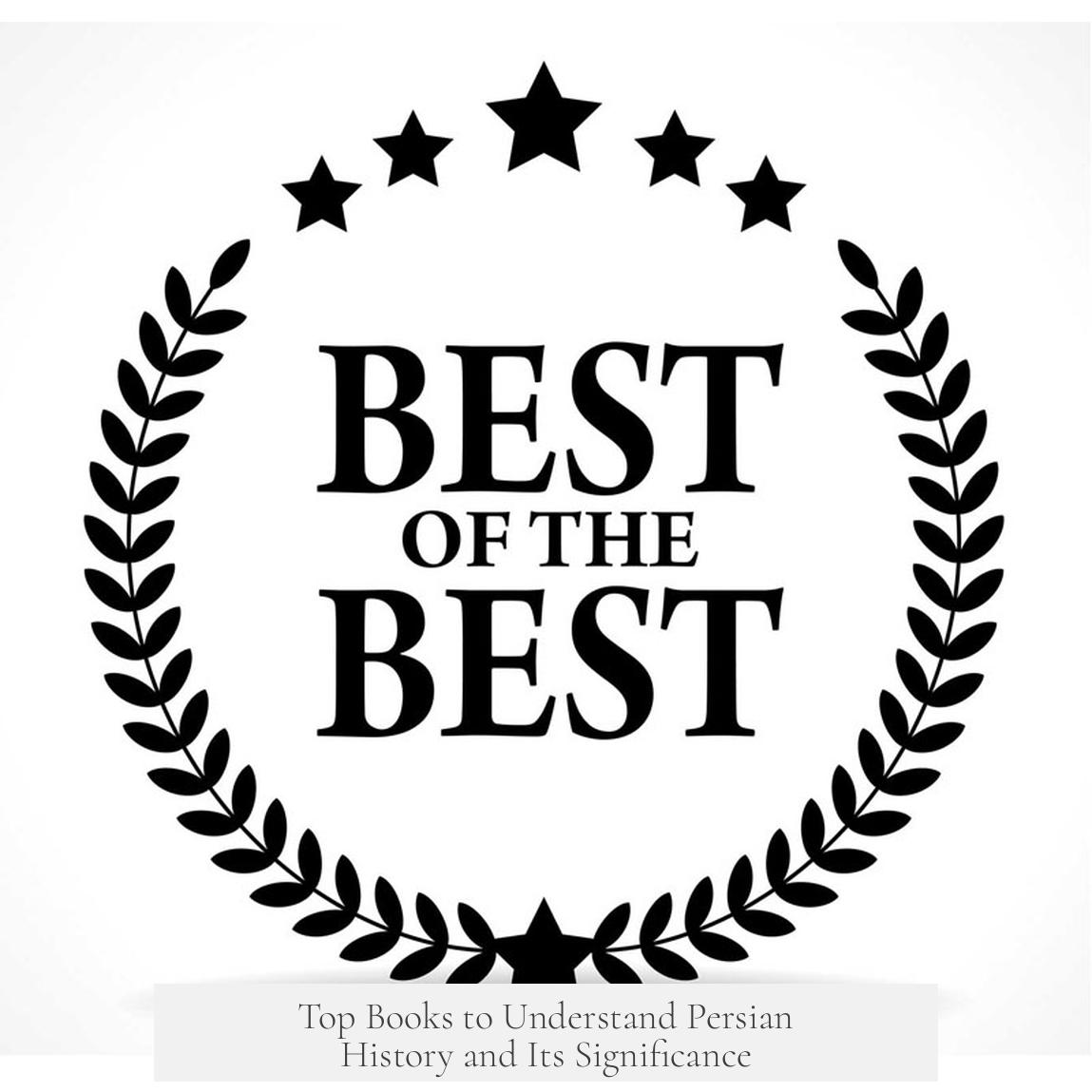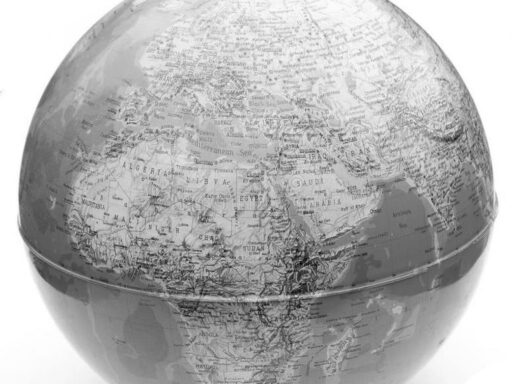Good books on Persian history cover multiple eras and provide a deep understanding of the region’s past. They range from comprehensive narratives of empires to focused studies on religion and culture.
Persian history is best approached by recognizing the many empires and periods that define it. The Achaemenid Empire, the Parthian and Sassanid dynasties, and the influence of Zoroastrianism represent major themes. Books focusing on these areas offer detailed insights.
The religious aspect of Persian history ties closely with Zoroastrianism, which shaped early Persian culture for centuries. A key work is A History of Zoroastrianism by Mary Boyce. This three-volume series provides a thorough historical investigation into Zoroastrianism from ancient Persia until the Byzantine era, roughly spanning 500 BCE onward. Although the series is unfinished and somewhat dated, it remains authoritative and highly recommended for understanding the religious and cultural context of ancient Persia.
For readers seeking a more recent perspective or a complementary overview, Introduction to Zoroastrianism by Prods Oktor Skjærvø is freely available online from Harvard University. This book modernizes and updates key findings about Zoroastrianism and its historical importance.
The Achaemenid Empire, founded around 550 BCE by Cyrus the Great, offers one of the richest periods in Persian history. One widely praised book on this era is From Cyrus to Alexander: A History of the Persian Empire by Pierre Briant. Over the last two decades, it has been considered the definitive scholarly reference for that empire’s history, despite its high cost.
For a concise introduction, Matt Waters’ Ancient Persia: A Concise History of the Achaemenid Empire, 550-330 BCE provides a clear and accessible entry point. It’s suitable for those new to the topic or preferring shorter works.
Amelie Kuhrt’s The Persian Empire: A Corpus of Sources from the Achaemenid Period compiles primary source documents with expert commentary, serving readers interested in original texts and detailed analysis.
Not yet published but notable, Lloyd Llewellyn-Jones’ forthcoming work titled Persians: the Age of the Great Kings promises to contribute fresh analysis on Achaemenid Persia. Monitoring its release can benefit enthusiasts of this era.
For exploring specific aspects of Achaemenid history, The World of Achaemenid Persia: The Diversity of Ancient Iran, edited by John Curtis and St. John Simpson, offers collections of specialized studies on the empire’s cultural and political variety.
When seeking a broader survey that spans several Persian dynasties, Josef Wiesehöfer’s Ancient Persia is an excellent choice. It covers the Achaemenid rise through the Hellenistic, Parthian, and Sassanid periods, concluding with the Arab-Islamic conquest. This book presents political developments and shifts over centuries.
Maria Brosius’ The Persians also surveys these major dynasties but emphasizes cultural history over political narratives. It highlights societal norms, art, and cultural shifts in the Persian world.
For quick reference and ongoing research, the Encyclopaedia Iranica is an invaluable, free online resource. It offers scholarly articles covering all facets of Iranian history and culture. This makes it a practical tool for students, scholars, and casual readers alike.
| Book | Focus | Recommended For |
|---|---|---|
| A History of Zoroastrianism by Mary Boyce | Zoroastrianism, Religious History | Ancient Persia, Religion |
| Introduction to Zoroastrianism by Prods Oktor Skjærvø | Zoroastrianism, Modern Overview | Complement to Boyce, Free Resource |
| From Cyrus to Alexander by Pierre Briant | Achaemenid Empire Political History | In-depth Achaemenid Study |
| Ancient Persia by Matt Waters | Achaemenid Empire, Concise | Introductory Readers |
| The Persian Empire by Amelie Kuhrt | Primary Sources, Achaemenid History | Researchers, Source Readers |
| Ancient Persia by Josef Wiesehöfer | Comprehensive Persian History | Broad Historical Overview |
| The Persians by Maria Brosius | Cultural History | Culture-Focused Readers |
- The best approach is to select books fitting your focus: political, cultural, or religious history.
- Mary Boyce and Skjærvø cover Zoroastrianism extensively.
- Briant and Waters provide thorough Achaemenid Empire studies.
- Broader history is covered by Wiesehöfer and Brosius.
- Use Encyclopaedia Iranica for accessible, up-to-date reference material.
What Are Some Good Books on Persian History?

If you’re curious about Persian history, you’re in the right place. The best books truly depend on what period and aspect interest you, but several key titles stand out as treasures for anyone diving into this rich, complex past. Persian history isn’t a simple tale—it’s a massive tapestry woven through multiple empires and cultural shifts. Let’s explore some top-notch reading that can help you understand it better.
Ever wonder how to navigate the vast timeline of Persian empires without feeling lost? Think of “Persian Empires” in plural because there’s more than one story here. Different dynasties ruled in various periods, and while some themes repeat, each era brings fresh twists.
Got a passion for ancient religions or spirituality? You’ll want to start with Zoroastrianism, the ancient faith that shaped Persia for centuries. For this, Mary Boyce’s A History of Zoroastrianism is golden. This three-volume set spans from about 500 BCE up to the Byzantine era, offering one of the most comprehensive looks at the religion intertwined with Persian history. Just a heads up: it’s a weighty, scholarly work and tends to focus deeply on religion rather than just politics and battles. It’s also a bit outdated compared to newer studies, so pair it wisely.
Speaking of pairing, Prods Oktor Skjærvø’s Introduction to Zoroastrianism is a fantastic, modern, and free resource. This Harvard publication updates some views and helps round out your understanding.
Want to jump into the famed Achaemenid Empire, the first great Persian empire dating c. 550-330 BCE? Matt Waters’ Ancient Persia: A Concise History of the Achaemenid Empire provides an accessible entry point. It balances detail and clarity nicely, perfect if you’re new to Persian history.
For a deep dive—hold on tight—Pierre Briant’s From Cyrus to Alexander: A History of the Persian Empire is the heavyweight champion of Achaemenid studies. It’s been the definitive text for 20 years. Fair warning, it’s pricey but widely respected for its depth and authority. If your budget allows, it’s a must-read to truly grasp this epoch’s complexity.
Another gem is Amelie Kuhrt’s The Persian Empire: A Corpus of Sources from the Achaemenid Period, which collects primary sources alongside expert commentary. Think of it as a rich treasure chest of materials letting you peek directly into the voices of that time.
Keep an eye out for the forthcoming book by Lloyd Llewellyn-Jones, Persians: the Age of the Great Kings. Although not published yet, it’s highly anticipated and promises fresh perspectives on this period. Early next year might be a great time to dive into new scholarship.
If you want to peel back layers beyond politics and battles, then John Curtis and St. John Simpson’s edited volume, The World of Achaemenid Persia: The Diversity of Ancient Iran, explores cultural and regional variety within Achaemenid society. This book paints a broader picture, showing Persia’s complexity beyond just kings and conquests.
Curious about Persian history on a grand scale, spanning empires from Achaemenids through Parthians and Sassanids to the Islamic conquest? Josef Wiesehöfer’s Ancient Persia offers an expansive overview. Well-regarded for bridging political and social histories, it’s great for those who want the “big picture.”
For a slightly different flavor, Maria Brosius’ The Persians narrows in on cultural and societal aspects rather than politics. If you’re intrigued by how everyday life, art, and beliefs evolved, this is the route to take.
What if you like online resources? Encyclopaedia Iranica (iranicaonline.org) is an absolute gem. Free and academic, it’s continuously updated. It’s the go-to place for Persian and Iranian history, culture, and language topics, letting you quickly check facts or explore topics in-depth.
Why These Books Matter
Persian history isn’t just about dates and kings. It’s a story of vast empires whose influence shaped cultures from Egypt to India. Each book above opens a unique window into this story—whether through religion, politics, or culture. Some are scholarly tomes; others more approachable summaries. Some are specialized, like Boyce’s focus on Zoroastrianism, while others, like Wiesehöfer’s work, sweep across epochs.
When assembling a personal reading list on Persian history, consider your interests and reading stamina. Do you want a broad panorama or deep dives into religion or empire politics? Combining several of these books can provide a well-rounded, nuanced understanding. Mary Boyce and Skjærvø complement each other for religious history. Briant and Waters provide political narratives. Brosius and Curtis offer cultural insights.
Final Tip
Don’t get overwhelmed! Persian history covers a vast, fascinating landscape. Start with a concise overview like Waters, explore specific interests—say, Zoroastrianism with Boyce and Skjærvø—and dive into specialized works as your curiosity grows. Follow up with online resources like Encyclopaedia Iranica to stay updated and explore details easily.
Ready to embark on your Persian history adventure? There’s a wealth of stories waiting in these books. Which era or aspect intrigues you most? The journey through Persia’s past is as vast as the empire itself!




